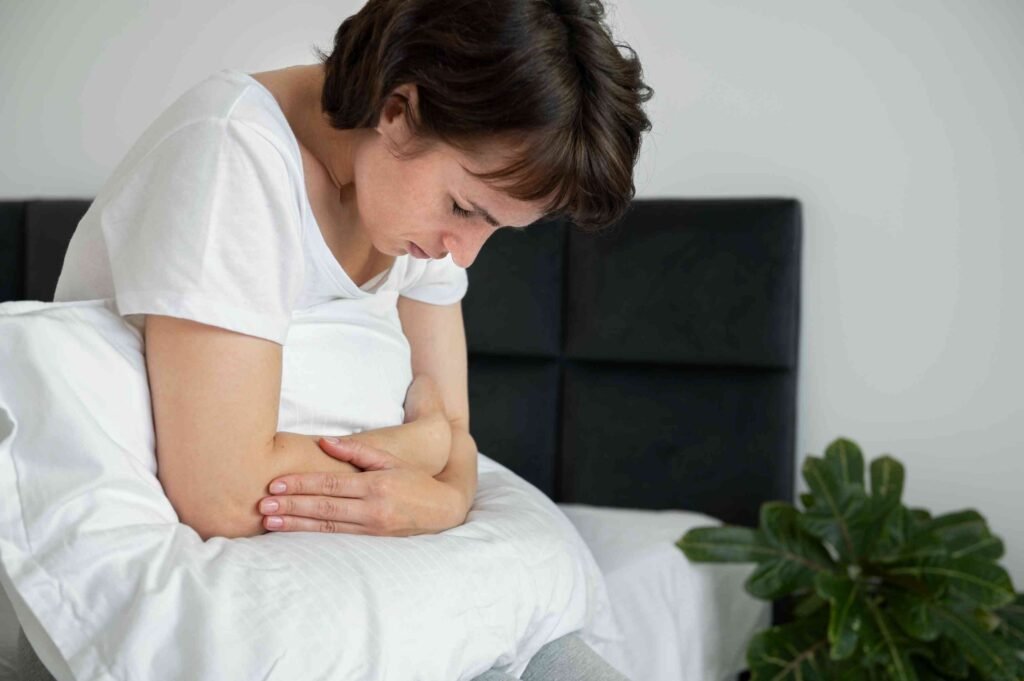Endometriosis: Symptoms, Diagnosis, and Treatment Options
If you’ve ever wondered what endometriosis is, you’re not alone. Despite affecting millions of people worldwide, endometriosis remains a misunderstood and often overlooked condition. This chronic, painful disorder impacts the lives of many women, often during their reproductive years, but what exactly is it? Let’s dive into the details to understand what endometriosis is, what symptoms to watch for, how it’s diagnosed, and what treatment options are available.
What is Endometriosis?
Endometriosis occurs when tissue similar to the lining of the uterus (called the endometrium) starts growing outside the uterus. This misplaced tissue can attach to various organs, including the ovaries, fallopian tubes, and even the intestines or bladder. Each month, under the influence of hormones, this tissue behaves like the lining of the uterus would—it thickens, breaks down, and bleeds. However, unlike menstrual blood, which exits the body, this blood has nowhere to go, leading to inflammation, pain, and, sometimes, scar tissue formation.
Endometriosis can have a profound impact on a person’s quality of life, affecting everything from work to social activities and even intimate relationships. And because it’s a chronic condition, managing it requires a thorough understanding and a tailored approach.
Symptoms of Endometriosis
One of the tricky aspects of endometriosis is that its symptoms can vary widely from person to person. While some people experience severe pain, others might have mild or even no symptoms, making it hard to recognize or diagnose. That being said, there are some common symptoms associated with endometriosis that you can look out for:
1. Pelvic Pain:
The hallmark symptom of endometriosis is pelvic pain. This isn’t your typical menstrual cramp—it’s usually more intense and can occur both before and during your period. For some, the pain may be chronic, persisting even outside of menstrual cycles.
2. Pain During Intercourse:
Many people with endometriosis report pain during or after sex, which can affect intimacy and relationships. This pain is usually associated with deep penetration and might feel sharp or like a deep ache.
3. Painful Bowel Movements or Urination:
Endometriosis can sometimes involve the bowels or bladder, leading to pain during bowel movements or urination, especially around menstrual periods.
4. Heavy or Irregular Periods:
Some individuals with endometriosis experience unusually heavy menstrual bleeding or spotting between periods. This can lead to anemia and fatigue, adding to the discomfort.

5. Infertility:
Endometriosis is a leading cause of infertility, affecting up to 30-50% of women who have difficulty conceiving. This can be particularly distressing for those trying to start or expand their families.
6. Other Symptoms:
People with endometriosis may also experience symptoms like nausea, bloating, fatigue, or pain in the lower back and legs. Since these symptoms overlap with other conditions, they can make endometriosis challenging to diagnose.
Diagnosing Endometriosis
Because endometriosis symptoms can resemble those of other conditions, getting an accurate diagnosis can be a bit of a journey. On average, it takes around 7-10 years for someone to receive a proper diagnosis after symptoms begin, which can be incredibly frustrating. So, how is endometriosis diagnosed? Let’s walk through the process:
1. Initial Consultation and Medical History
Your doctor will likely start with a detailed discussion about your symptoms, medical history, and family history. This step is crucial, as endometriosis can sometimes run in families. Describing your symptoms accurately—including their timing, intensity, and impact on your life—can help your doctor get a clearer picture of what’s going on.

2. Pelvic Examination
During a pelvic exam, your doctor will check for any abnormalities or signs of endometriosis, such as tenderness or nodules in the pelvic area. While this exam won’t provide a definitive diagnosis, it can give your doctor clues about the likelihood of endometriosis.
3. Imaging Tests
Ultrasounds, especially transvaginal ultrasounds, are often used to detect endometriosis and other abnormalities. MRI scans can also provide detailed images of the pelvic organs, giving more insight into the extent of endometriosis. However, it’s important to note that imaging tests may not detect all instances of endometriosis, particularly if the lesions are small or located in hard-to-see areas.
4. Laparoscopy
The gold standard for diagnosing endometriosis is a laparoscopy, which is a minor surgical procedure. During this procedure, a small incision is made in the abdomen, and a laparoscope (a tiny camera) is inserted to examine the pelvic organs. If endometriosis is found, the surgeon can often remove or biopsy the tissue right then and there. While it’s an invasive procedure, laparoscopy is currently the most reliable method for diagnosing endometriosis.
Treatment Options for Endometriosis
While there’s no cure for endometriosis, there are several treatment options available to help manage symptoms and improve quality of life. Treatment plans are often personalized based on the severity of symptoms, age, and whether you want to conceive in the future. Let’s explore the options:
1. Pain Relief Medications
For many, the first line of treatment for endometriosis involves over-the-counter pain relievers, like NSAIDs (e.g., ibuprofen or naproxen). These medications can help reduce inflammation and alleviate pain, although they may not be sufficient for everyone.

2. Hormonal Therapy
Hormonal treatments aim to control the hormonal fluctuations that contribute to the growth of endometrial-like tissue outside the uterus. These therapies can come in various forms, including:
– Birth Control Pills: Oral contraceptives can help regulate the menstrual cycle, reducing or even stopping periods, which in turn may alleviate endometriosis pain.
– Progestin Therapy: Progestin, a synthetic form of progesterone, can be taken as an injection, pill, or intrauterine device (IUD) to help shrink endometrial tissue.
– GnRH Agonists: These drugs induce a temporary menopausal state by reducing estrogen levels, which can significantly reduce symptoms. However, they’re typically used for short durations due to potential side effects like bone density loss.
3. Surgical Options
For those with severe symptoms or those who wish to improve fertility, surgery may be an option. Surgical procedures can include:
– Laparoscopic Excision Surgery: During this procedure, the surgeon removes or destroys endometrial tissue, which can provide significant relief from symptoms. It’s a preferred method for many as it’s minimally invasive.
– Hysterectomy:
In extreme cases where other treatments haven’t worked and symptoms are debilitating, a hysterectomy (removal of the uterus) may be considered. This option is generally reserved for those who do not wish to have children, as it eliminates the possibility of pregnancy.
4. Alternative Therapies
Some people find relief through complementary treatments. While not a substitute for medical treatment, these therapies can be used alongside traditional methods to help manage symptoms:
– Acupuncture: This ancient practice may help relieve pain and improve circulation in the pelvic area.
– Dietary Changes: Adopting an anti-inflammatory diet rich in omega-3 fatty acids, fruits, and vegetables, while limiting red meat and processed foods, can sometimes help manage symptoms.
– Physical Therapy: Specialized pelvic floor physical therapy can alleviate pelvic pain and improve muscle function, helping to reduce discomfort associated with endometriosis.

5. Lifestyle and Self-Care
Endometriosis is a chronic condition, which means that managing it often involves making lifestyle adjustments and embracing self-care practices. Here are some ways to support your body and mind:
– Exercise: Regular, gentle exercise like yoga, swimming, or walking can help improve circulation, reduce inflammation, and boost your mood.
– Stress Management: Techniques like mindfulness meditation, deep breathing exercises, and journaling can help you cope with the emotional challenges of endometriosis.
– Support Networks: Joining support groups, either in person or online, can provide emotional support and valuable insights from others who understand what you’re going through.

Living with Endometriosis
While endometriosis can be a challenging condition, it doesn’t have to define your life. With the right treatment plan and support, many people with endometriosis find relief and learn to manage their symptoms effectively. If you suspect, don’t hesitate to reach out to a healthcare provider who can guide you through the process and help you explore your options. Remember, you’re not alone—there’s a supportive community and a wealth of resources available to help you on your journey.
Endometriosis may be a part of your life, but it doesn’t have to limit your dreams or your happiness. By understanding your condition and taking proactive steps, you can take back control and live a fulfilling, vibrant life.


